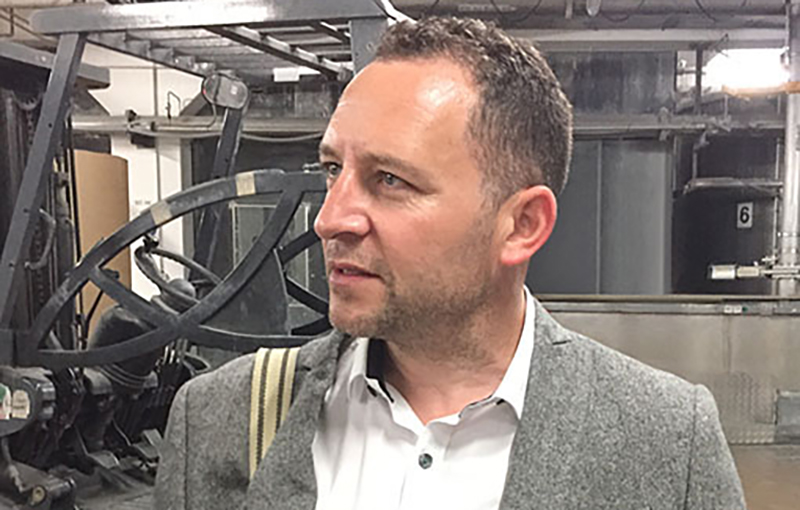Interview with Marc Hartog, British Journal of Photography

Marc Hartog, CEO of the British Journal of Photography, visited the Felix Schoeller Group in Osnabrück, along with Head of Commercial, Pax Zoega, to exchange ideas for their continued cooperation on the Felix Schoeller Photo Award. The British Journal of Photography has been a successful media partner since January 2017, and their skills have supported the success of this year’s award.
After an inspiring tour of the production line for specialty paper, we spoke with Marc Hartog about the future of the journal and the value of its photography.
Analogue things seem to come back.
Talking to Marc Hartog, CEO of the British Journal of Photography
The British Journal of Photography (BJP) is the eldest photo magazine worldwide. Tell us about your plans about the future of BJP.
BJP has an incredible heritage and we have maintained a complete physical archive of leather-bound volumes dating all the way back to 1854! We have in fact already undertaken a major digitization project and have scanned pages of almost the complete collection. However the project is currently stalled, partially due to the investment required to create a searchable front end for the archive and partially due to uncertainty around the complexity of copyright law in the UK – whether we would be in breach by publishing the original printed pages (in context) in a digital format. The law here is unclear with no UK precedent. I am keen to realise this project somehow as I believe the content in our archive documents the history of the art and science of photography in a way unparalleled by any other periodical and would be a wonderful gift to the world.
Other than this we have been working hard to leverage the BJP brand over the last few years since forming 1854.media and becoming independent, by launching several important awards and competitions such as Portrait of Britain and our International Photography Awards. We have also launched our annual season of student engagement which includes a pop up exhibition and series of free talks for students and graduates.
What is your personal view about the role of photography as an art form today and the near future?
Photography continues to grow in importance as an art form that is taken seriously and the sheer number of individuals attending the ever-growing number of international photo fairs and festivals is testament to its popularity.
The BJP is a platform for emerging and professional photographers alike. Please, tell us about the importance of your exhibitions to those new talents.
As a platform one of the most important things we can do is to give a voice to emerging talent. We would ideally like to do more of this sort of activity, just restricted by resources, but having your work published or exhibited is fundamental to finding success in the photography world…I am not talking about commercial success but the sort of success that is more important to most photographers which is recognition by peers of their personal work.
Which impact do exhibitions have to visitors?
Simple: inspiration!
As I learned you are a fan of printed objects. When you take a look at all the media forms, which role does print take in the crossmedia mix?
BJP I hope will always exist as the ‘calling card’ of what we do. The very best, presented in a beautiful format to create a tactile experience that nothing other than print done well can match. I foresee a time – maybe soon – where BJP is advertising free and even more beautiful with a wider variety of papers and finishes. We want it to be perceived and enjoyed as a monthly photobook more than a magazine, which happens to contain the very latest in contemporary photography and keep you up to date with all things you need to know about going on in the international photography world.
Which media are readers reading tomorrow? Or are they changing from readers to viewers instead?
It is a mixed bag, nowadays more people are turning to the internet for every day material and news but I think that the growing number of nicely created independent magazines shows that there is an appetite for print still… in fact all things analogue seem to be making a come back!

